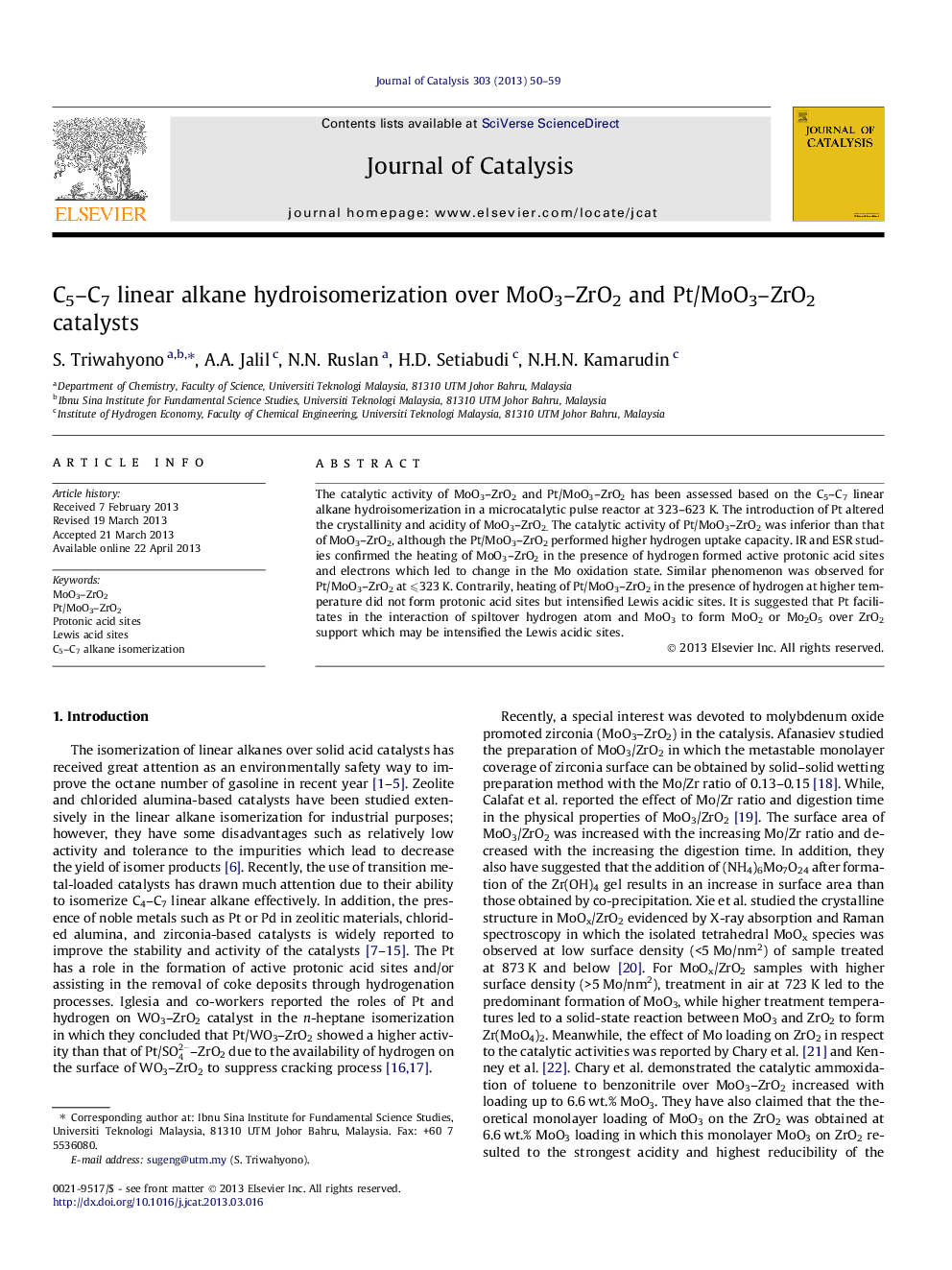| Article ID | Journal | Published Year | Pages | File Type |
|---|---|---|---|---|
| 61256 | Journal of Catalysis | 2013 | 10 Pages |
•Pt decreased the concentration of Brønsted and Lewis acid sites of MoO3–ZrO2.•Hydrogen uptake capacity of Pt/MoO3–ZrO2 is higher than that of MoO3–ZrO2.•Heating of MoO3–ZrO2 in the presence of H2 formed protonic acid sites.•Heating of Pt/MoO3–ZrO2 in the presence of H2 formed Lewis acid sites.•The presence of Pt did not enhance the catalytic isomerization of MoO3–ZrO2.
The catalytic activity of MoO3–ZrO2 and Pt/MoO3–ZrO2 has been assessed based on the C5–C7 linear alkane hydroisomerization in a microcatalytic pulse reactor at 323–623 K. The introduction of Pt altered the crystallinity and acidity of MoO3–ZrO2. The catalytic activity of Pt/MoO3–ZrO2 was inferior than that of MoO3–ZrO2, although the Pt/MoO3–ZrO2 performed higher hydrogen uptake capacity. IR and ESR studies confirmed the heating of MoO3–ZrO2 in the presence of hydrogen formed active protonic acid sites and electrons which led to change in the Mo oxidation state. Similar phenomenon was observed for Pt/MoO3–ZrO2 at ⩽323 K. Contrarily, heating of Pt/MoO3–ZrO2 in the presence of hydrogen at higher temperature did not form protonic acid sites but intensified Lewis acidic sites. It is suggested that Pt facilitates in the interaction of spiltover hydrogen atom and MoO3 to form MoO2 or Mo2O5 over ZrO2 support which may be intensified the Lewis acidic sites.
Graphical abstractIR and ESR studies showed that the interaction of hydrogen with MoO3–ZrO2 formed protonic acid sites and electrons which led to change in the Mo oxidation state, whereas the interaction of hydrogen with Pt/MoO3–ZrO2 generated Lewis acid sites. The presence of Pt decreased the activity toward C5–C7 linear alkane hydroisomerization.Figure optionsDownload full-size imageDownload high-quality image (93 K)Download as PowerPoint slide
